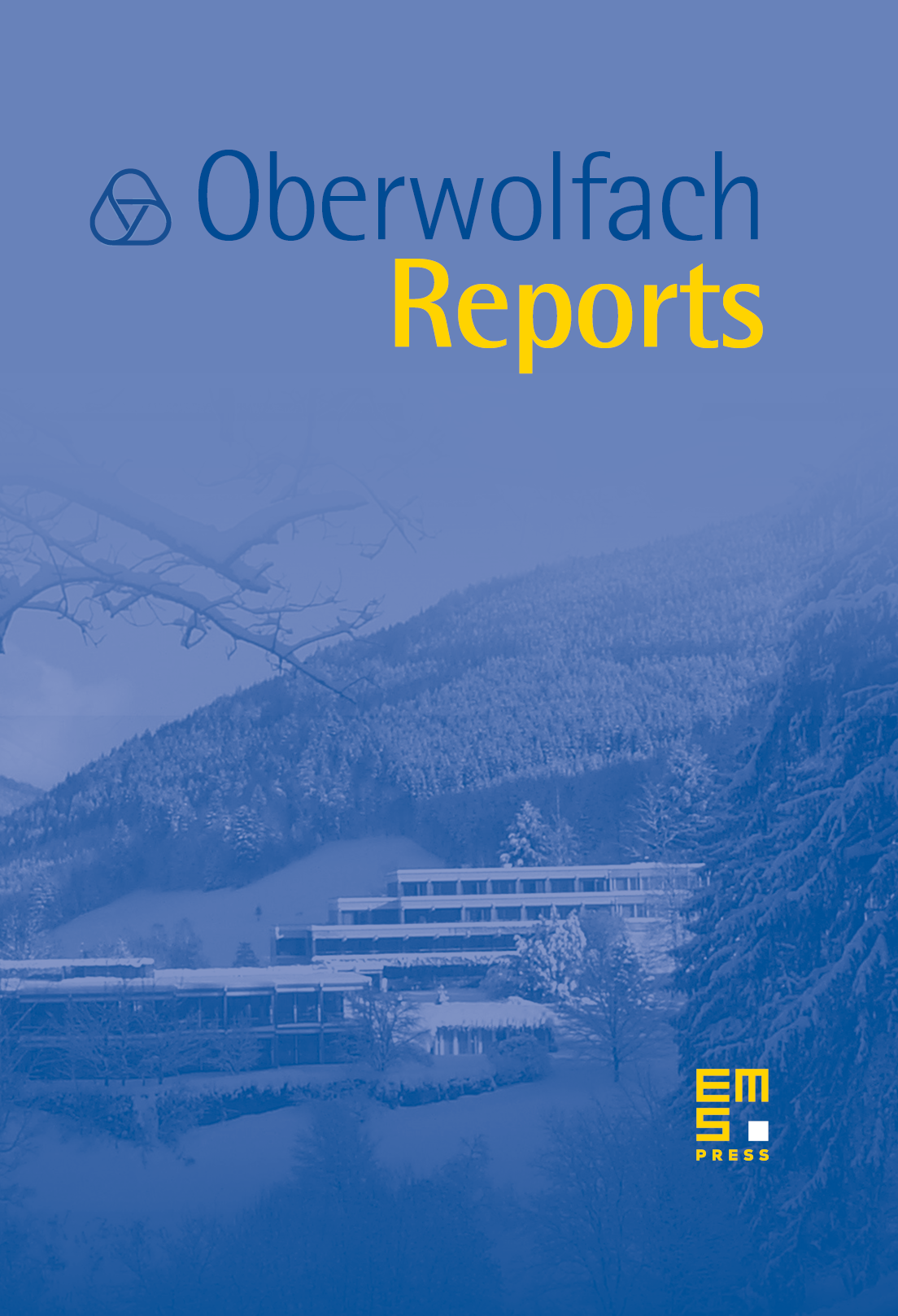Infinite-Dimensional Lie Theory
Karl-Hermann Neeb
Friedrich-Alexander-Universität Erlangen-Nürnberg, GermanyArturo Pianzola
University of Alberta, Edmonton, Canada

Abstract
Nowadays infinite-dimensional Lie theory is a core area of modern mathematics, covering a broad range of branches, such as the structure and classification theory of infinite-dimensional Lie algebras, geometry of infinite-dimensional Lie groups and their homogeneous spaces, and representation theory of infinite-dimensional Lie groups, Lie algebras and Lie-superalgebras. The focus of this workshop was on recent developments in all of these areas with particular emphasis on connections with other branches of mathematics, such as algebraic groups and Galois cohomology.
The meeting was attended by 52 participants from many European countries, Canada, the USA, Brazil, Japan and Australia. The meeting was organized around a series of 23 lectures each of 50 minutes duration representing the major recent advances in the area. We feel that the meeting was exciting and highly successful. The quality of the lectures, several of which surveyed recent developments, was outstanding. The exceptional atmosphere of the Oberwolfach Institute provided an optimal environment for bringing people working in algebraically, geometrically or analytically oriented areas of infinite-dimensional Lie theory together, and to create an atmosphere of scientific interaction and cross-fertilization.
Without going too much into detail, let us mention some important new developments that were showcased during the workshop. In the structure theory of infinite-dimensional Lie algebras, the classification of extended affine Lie algebras, based on the notion of a Lie torus has now reached a mature state (Neher). In the classification theory of infinite-dimensional Lie algebras, several deep results were obtained recently with Galois cohomology methods exhibiting exciting connections between forms of multiloop algebras and the Galois theory of forms of algebras over rings (Allison, Gille, Chernousov). This branch of structure theory is complemented by the connection between the classification of generalized Kac–Moody algebras and automorphic forms (Scheithauer).
In the representation theory of infinite-dimensional Lie algebras, the most exciting new developments concern various kinds of categories of representations of current algebras and Kac–Moody–Lie (super-)algebras (Benkart, Chari, Futorny, Gorelik, Kumar, Littelmann, Serganova). Another interesting, recently very active direction of Kac–Moody theory are Kac–Moody groups over finite fields, which leads to a new class of infinite simple groups (Caprace).
On geometric and analytic Lie theory, we had exiting talks on new geometric directions in the representation theory of Banach–Lie groups, related to Banach–Lie–Poisson spaces (Ratiu), and applications of heat kernel measures in the representation theory of loop groups (Pickrell). On the opposite side of the spectrum of Lie group theory, namely direct limit theory, crucial progress has been made on direct limits of unitary representations, as well as in the context of direct limits of infinite-dimensional groups (Wolf, Glöckner). We further had several contributions dealing with geometric aspects such as Chern forms, gerbes and generalized projective geometries (Paycha, Schweigert, Bertram).
Finally, we had several exciting talks about several more particular results, dealing with vertex operator algebras, polyzeta values and quantization (Billig, Mathieu, Omori). More specific information is contained in the abstracts which follow in this volume.
Cite this article
Karl-Hermann Neeb, Arturo Pianzola, Infinite-Dimensional Lie Theory. Oberwolfach Rep. 3 (2006), no. 4, pp. 3259–3320
DOI 10.4171/OWR/2006/55